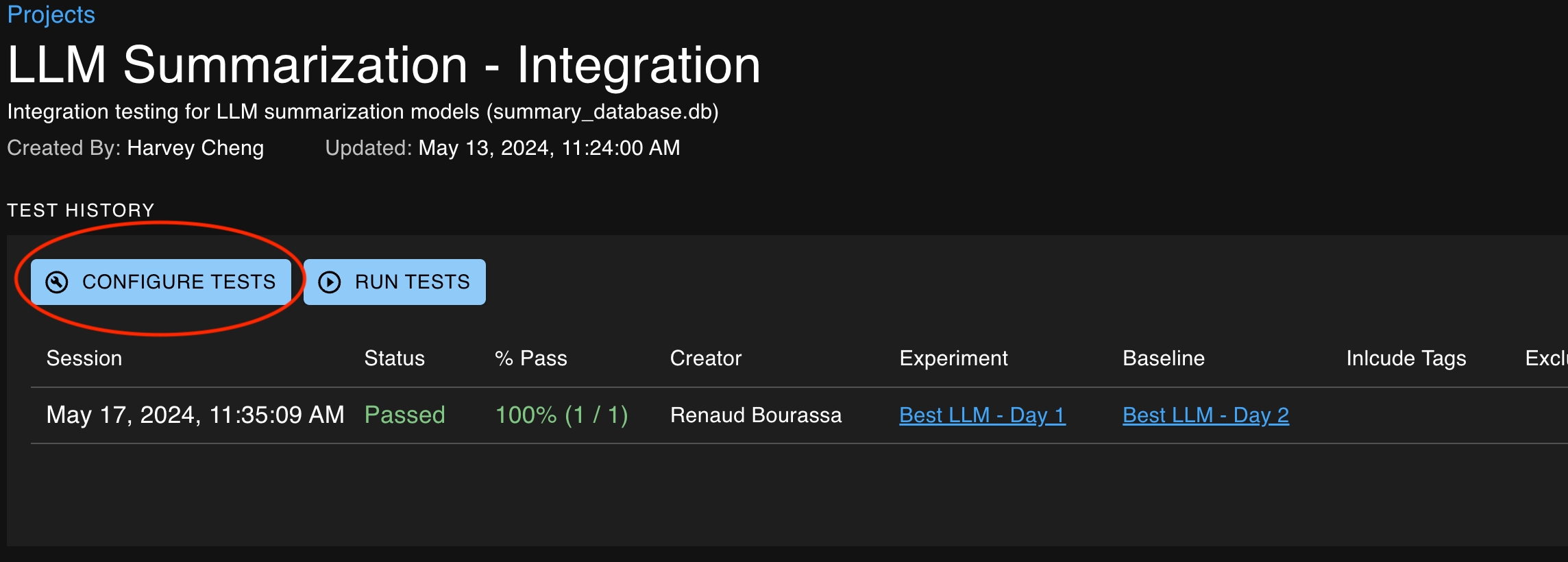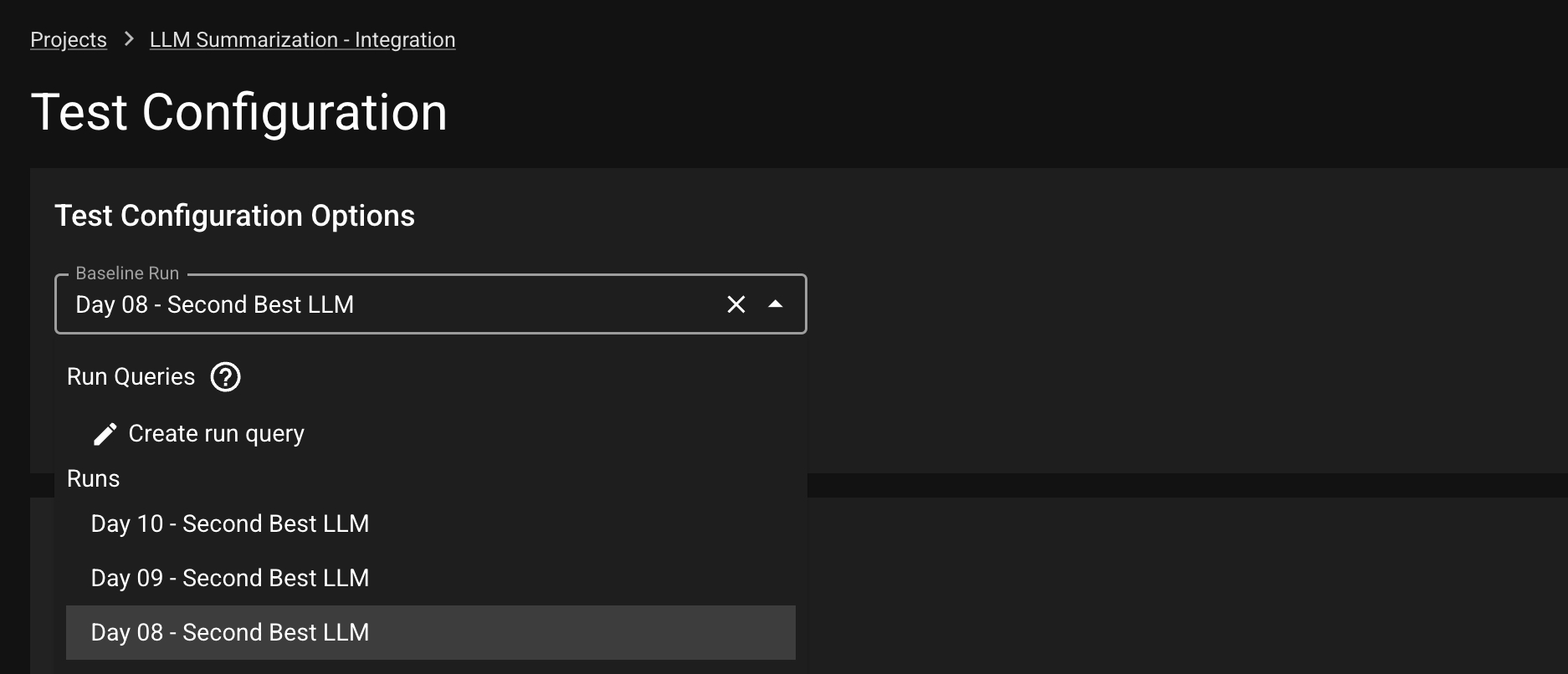Executing Tests Via SDK
Tests can also be executed via the SDK after results data has been reported. This requires the following steps.
Report an initial run and set that as a baseline


Setting baseline in SDK
Alternatively, you can also set a Run as baseline using the set_run_as_baseline function.
Close a new run in that project
Executing the close_run command for a new run in that same project will finalize the data, enabling it for use in Tests.
Create Test Session
Execute the create_test_session command, providing your new run as the "experiment". Tests will then use the previously-defined baseline for comparisons.
Was this helpful?

